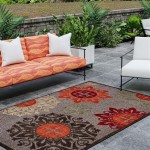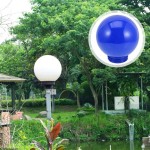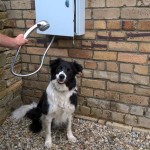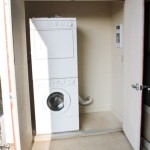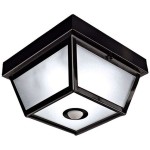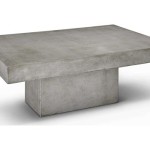Battery Operated Ceiling Fans for Outdoor Use: A Comprehensive Guide
Outdoor living spaces have become increasingly popular, allowing individuals to extend their homes and enjoy the natural environment. Maintaining a comfortable temperature in these outdoor areas, particularly during warmer months, can be challenging. While traditional ceiling fans offer an effective solution, their reliance on a wired electrical connection often limits their placement. Battery-operated ceiling fans provide a flexible and convenient alternative, enabling cooling comfort in locations where electrical access is restricted or non-existent. This article will examine the features, benefits, selection criteria, and maintenance considerations associated with battery-operated ceiling fans designed for outdoor use.
Understanding the Need for Battery-Operated Outdoor Ceiling Fans
Traditional wired ceiling fans require a direct connection to a building's electrical system. This necessitates professional installation involving wiring, junction boxes, and potentially conduit, incurring significant costs and limiting placement options to areas with existing electrical infrastructure. Furthermore, situations such as temporary outdoor events, remote patios, or gazebos often lack convenient access to power outlets. Battery-operated ceiling fans address these limitations by providing a self-contained power source, eliminating the need for hardwiring and allowing for placement virtually anywhere. This inherent portability and ease of installation make them an attractive option for enhancing outdoor comfort.
The absence of cords also enhances safety, particularly in areas where children or pets are present. Tripping hazards associated with exposed wiring are completely eliminated, minimizing the risk of accidents. This benefit is particularly relevant in outdoor settings where visibility may be reduced during evening hours. Furthermore, battery-operated fans can be easily relocated as needed, adapting to changing outdoor layouts and events. For example, a fan can be moved from a patio area to a poolside cabana for an afternoon gathering and then easily returned to its original location.
Finally, from an aesthetic perspective, the absence of visible wiring contributes to a cleaner, more streamlined appearance. By eliminating the need for unsightly cords and conduit, battery-operated ceiling fans seamlessly integrate into the existing outdoor decor, enhancing the overall visual appeal of the space. This clean aesthetic is particularly important for homeowners who prioritize a polished and well-maintained outdoor environment.
Key Features and Considerations When Choosing a Battery-Operated Outdoor Ceiling Fan
Selecting the appropriate battery-operated ceiling fan for outdoor use requires careful consideration of several key features and specifications. These factors directly impact the fan's performance, longevity, and overall suitability for the intended application. Ignoring these considerations can lead to dissatisfaction with the purchase and potentially necessitate replacement in the near future.
Battery Life and Power: The battery's capacity, measured in amp-hours (Ah), directly correlates to the fan's runtime. Higher Ah ratings translate to longer operational periods between charges. Consider the typical usage patterns and desired runtime when selecting a fan. For example, a fan used only for occasional weekend gatherings will require a smaller battery capacity than one used daily for several hours. Battery voltage also affects performance, with higher voltage often resulting in stronger airflow. Lithium-ion batteries are generally preferred due to their high energy density, long lifespan, and relatively lightweight construction. The charging time required to fully replenish the battery is another important factor to consider. Models with rapid charging capabilities can significantly reduce downtime.
Fan Blade Material and Design: Outdoor ceiling fans must withstand exposure to the elements, including moisture, sunlight, and temperature fluctuations. Fan blades constructed from durable, weather-resistant materials such as ABS plastic, galvanized steel, or treated wood are essential. The blade design also plays a crucial role in airflow efficiency. Blades with a greater pitch angle (the angle at which the blade is angled relative to the horizontal) typically move more air. The number of blades also influences airflow, with more blades generally providing smoother and more consistent airflow. Blade size, measured in diameter, dictates the area that the fan can effectively cool. Larger blades are suitable for larger spaces, while smaller blades are appropriate for smaller patios or gazebos.
Motor Type and Speed Settings: The motor drives the fan blades and directly affects its performance and energy efficiency. Direct Current (DC) motors are generally more energy-efficient and quieter than Alternating Current (AC) motors. DC motors also offer a wider range of speed settings, allowing for finer control over airflow. The number of speed settings offered by the fan should be considered, as this determines the user's ability to customize the airflow to match their preferences. A reverse function, which allows the fan to rotate in the opposite direction, can be beneficial for distributing warm air during cooler months. Variable speed control allows precise adjustment of airflow for optimal comfort.
Weather Resistance Rating: Given that the fan will be exposed to the elements, ensure that it carries an appropriate weather resistance rating. Look for fans with an IP (Ingress Protection) rating that indicates its ability to withstand dust and water intrusion. An IP44 rating, for example, indicates protection against solid objects larger than 1mm and splashes of water from any direction. For locations with heavy rainfall or frequent exposure to moisture, a higher IP rating is recommended. The fan's housing should also be constructed from corrosion-resistant materials to prevent rust and degradation over time.
Light Fixture Integration: Some battery-operated ceiling fans include integrated light fixtures, providing both cooling and illumination. This can be a convenient feature for outdoor spaces that require lighting, such as patios or decks used for evening entertainment. When selecting a fan with a light fixture, consider the type of bulb used (LED is preferred for its energy efficiency and long lifespan), the brightness of the light (measured in lumens), and the color temperature (measured in Kelvin). A dimming function can also be beneficial for creating a desired ambiance.
Remote Control Functionality: Many battery-operated ceiling fans come with a remote control that allows for convenient operation from a distance. Remote controls typically offer functions such as speed adjustment, light control (if applicable), and on/off switching. Some advanced models may also offer features such as sleep timers and automatic shut-off functions. The range of the remote control should be considered, particularly for larger outdoor spaces. A well-designed remote control with intuitive controls can greatly enhance the user experience.
Installation and Maintenance of Battery-Operated Outdoor Ceiling Fans
Proper installation and regular maintenance are crucial for ensuring the long-term performance and lifespan of a battery-operated outdoor ceiling fan. Following the manufacturer's instructions carefully during installation and adhering to a regular maintenance schedule will help prevent premature failures and ensure optimal functionality.
Installation Procedures: The installation process typically involves mounting the fan to a suitable support structure, such as a pergola beam or a gazebo ceiling. Ensure that the support structure is strong enough to bear the weight of the fan and that it is properly secured. The fan should be installed at a sufficient height to provide adequate clearance and prevent accidental contact. Follow the manufacturer's instructions meticulously, paying close attention to the wiring connections and mounting hardware. If unsure about any aspect of the installation process, it is recommended to consult a qualified electrician or handyman. Incorrect installation can not only damage the fan but also pose a safety hazard.
Battery Care and Charging: Proper battery care is essential for maximizing battery life. Avoid overcharging or completely discharging the battery, as this can damage the cells and reduce its capacity. Follow the manufacturer's recommendations for charging the battery. Use only the charger that is specifically designed for the fan's battery. Store the battery in a cool, dry place when not in use. Avoid exposing the battery to extreme temperatures, as this can also damage the cells. Regularly check the battery terminals for corrosion and clean them if necessary. When storing the fan for extended periods, it is advisable to remove the battery to prevent self-discharge and potential damage.
Cleaning and Maintenance: Regular cleaning is necessary to remove dust and debris that can accumulate on the fan blades and motor housing. Use a soft, damp cloth to wipe down the blades and housing. Avoid using harsh chemicals or abrasive cleaners, as these can damage the fan's finish. Periodically check the mounting hardware for tightness and tighten any loose screws or bolts. Inspect the fan blades for cracks or damage and replace them if necessary. Listen for any unusual noises coming from the motor, which could indicate a problem with the bearings or other internal components. If any problems are detected, consult a qualified technician for repair.
Winter Storage: During the winter months, when the fan is not in use, it is important to properly store it to protect it from the elements. Remove the fan from its mounting location and store it in a dry, protected area, such as a garage or shed. Clean the fan thoroughly before storing it. Cover the fan with a dust cover to prevent the accumulation of dust and debris. Remove the battery and store it separately in a cool, dry place. These steps will help ensure that the fan is in good condition and ready for use when warmer weather returns.
By understanding the features, benefits, selection criteria, and maintenance considerations associated with battery-operated ceiling fans designed for outdoor use, individuals can make informed decisions and enjoy the enhanced comfort and convenience they provide in their outdoor living spaces. Careful planning and attention to detail throughout the selection, installation, and maintenance processes will ensure optimal performance and longevity.

Portable Mini Usb Ceiling Fan For Rv Camping Bahrain Ubuy

Battery Operated Outdoor Ceiling Fan Discount

The Rechargeable Outdoor Overhead Fan Hammacher Schlemmer

Portable Ceiling Fan Mini Camping Battery Powered Accessories Desk Camp Lanterns Gear Outdoor Little Jax

The Rechargeable Outdoor Overhead Fan Hammacher Schlemmer

7200mah Camping Fan Battery Operated Remote Control 4 Gears Portable Led Light Tent Hanging Ceiling For Home Outdoor Bed Daraz Com Bd

Portable 2 In 1 Ceiling Fan Light With Remote Control 3600mah Battery Powered Suitable For Home Outdoor Camping Travel Outdoors Easy To Carry Gift

Portable Outdoor Usb Charging Tent Fan With Night Light Long Battery Life Home Dormitory Ceiling Lamp Walmart Com

Portable Tent Ceiling Fan With 3 Adjustable Light Levels 5 Usb Rechargeable Lithium Battery Powered For Indoor Use Camping And Outdoor Events Us

Canopy Breeze 31 In W Outdoor White Rechargeable Ceiling Fan For Portable Canopies With Remote 6 Hour Run Time Cb 101 The Home

